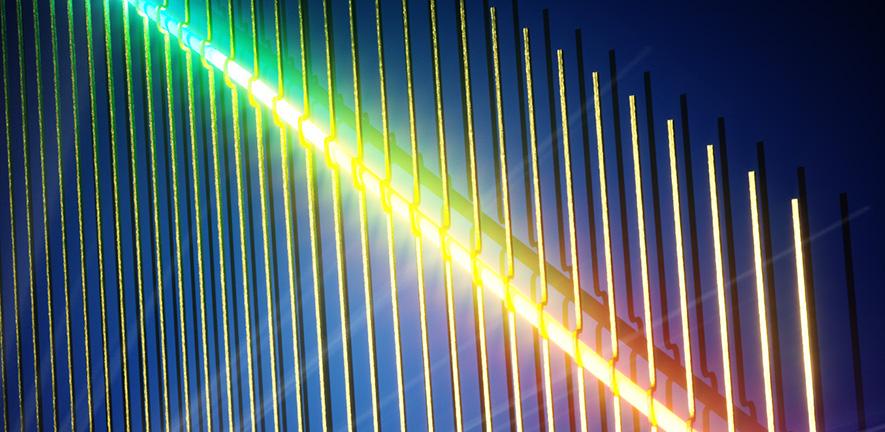
Single-Nanowire Spectrometer Works Separately from Components
Scientists at the University of Cambridge have developed a microspectrometer based on a single, compositionally engineered nanowire that is independent of complex optical components or cavities. According to the researchers, it is the smallest spectrometer ever designed.
The Cambridge team, working with colleagues from China, England, and Finland, used a nanowire whose material composition varied along the length of the wire, which allowed it to be responsive to different colors of light across the visible spectrum. Using techniques similar to those used for the manufacture of computer chips, the team then created a series of light-responsive sections on this nanowire.
The researchers said that even now, the majority of spectrometers are based on principles similar to what Newton demonstrated with his prism almost 400 years ago: the spatial separation of light into different spectral components. Such a basis has made it challenging to shrink spectrometers to sizes much smaller than a coin.

Artist’s impression of single-nanowire spectrometer. Courtesy of Ella Maru Studio.
“We engineered a nanowire that allows us to get rid of the dispersive elements, like a prism, producing a far simpler, ultraminiaturized system than conventional spectrometers can allow,” researcher Zongyin Yang said. In the team’s spectrometer, photocurrents are measured along the length of the nanowire. The responses received from the different sections of the nanowire can be directly fed into a computer algorithm to reconstruct the incident light spectrum.
The ultracompact spectrometer can provide visible-range monochromatic and broadband light reconstruction as well as spectral imaging from centimeter-scale focal planes down to lensless, in situ mapping at the single-cell scale.
"With our device, every pixel contains data points from across the visible spectrum, so we can acquire detailed information far beyond the colors which our eyes can perceive. This can tell us, for instance, about chemical processes occurring in the frame of the image,” researcher Tom Albrow-Owen said.
Potential applications for the device include assessing food freshness and drug quality and identifying counterfeit objects, all from a smartphone camera. “Our approach could allow unprecedented miniaturization of spectroscopic devices, to an extent that could see them incorporated directly into smartphones,” research fellow Tawfique Hasan said.
One potential use of the nanowire spectrometer could be in biology. Because the device is so tiny, it can directly image single cells without the need for a microscope. Unlike other bioimaging techniques, the information obtained by the nanowire spectrometer could include a detailed analysis of the chemical fingerprint of each pixel.
The researchers believe that the platform they have created could lead to a new generation of ultracompact spectrometers working in the UV to IR wavelengths. They have filed a patent for the technology and hope to see it used for real-life applications within the next five years.
The research was published in Science (https://doi.org/10.1126/science.aax8814).
Published: September 2019